One of my favorite ways to learn about history is through how people eat, and in particular, how people celebrate with food. I love looking at old cookbooks and menus, trying to glean what would make a dish special enough to share.
Tracing the culture of Towson through the menus for things like graduation and sports event celebrations is an interesting peek into the history of the school and the culture at the time.
Some of our earliest menus date from just before the school moved to Towson itself. In May of 1915, the Maryland State Normal School (MSNS), as we were then known, was in West Baltimore. Hand-drawn invitations were sent for the “Junior Senior Banquet”.
This invitation was sent to Ada May Cunningham of Highlandtown. She graduated from MSNS the following spring.

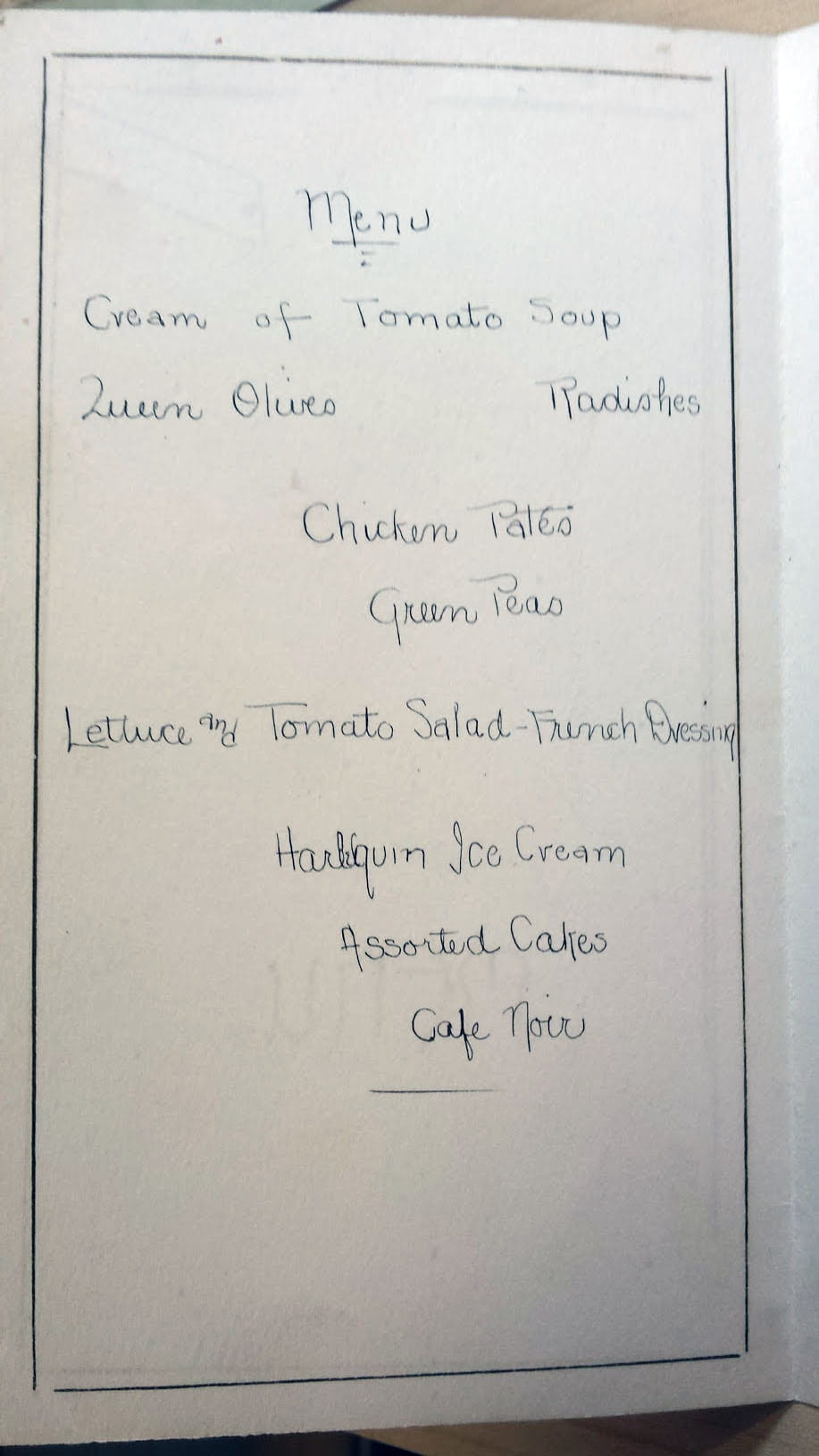
The fancy script and phrasing make you think that big green olives, also known as Queen Olives and Neapolitan ice cream, once called Harlequin ice cream, are something really special!

Miss Cunningham saved the invitation for the next year’s banquet, which also had that tri-colored ice cream.
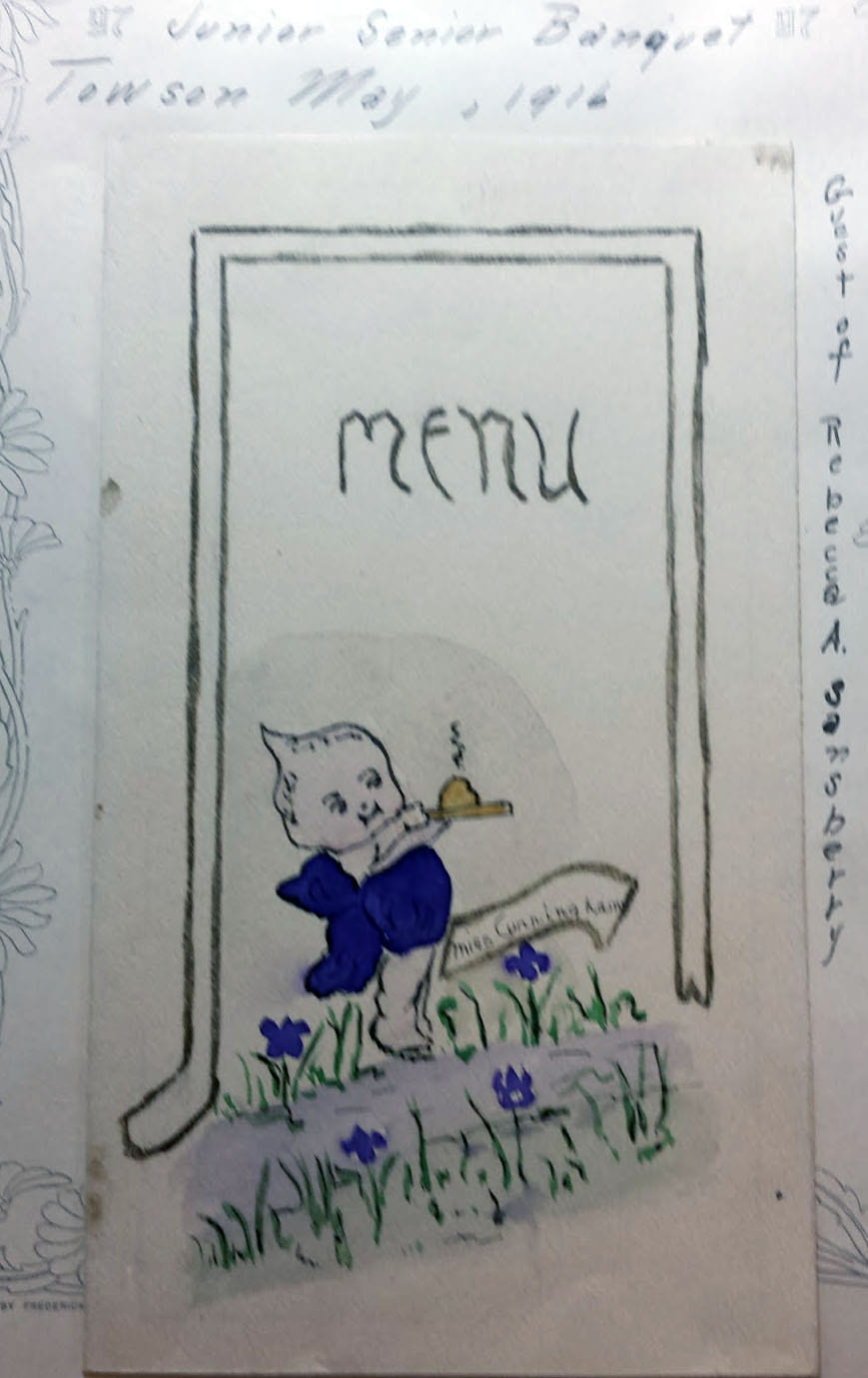
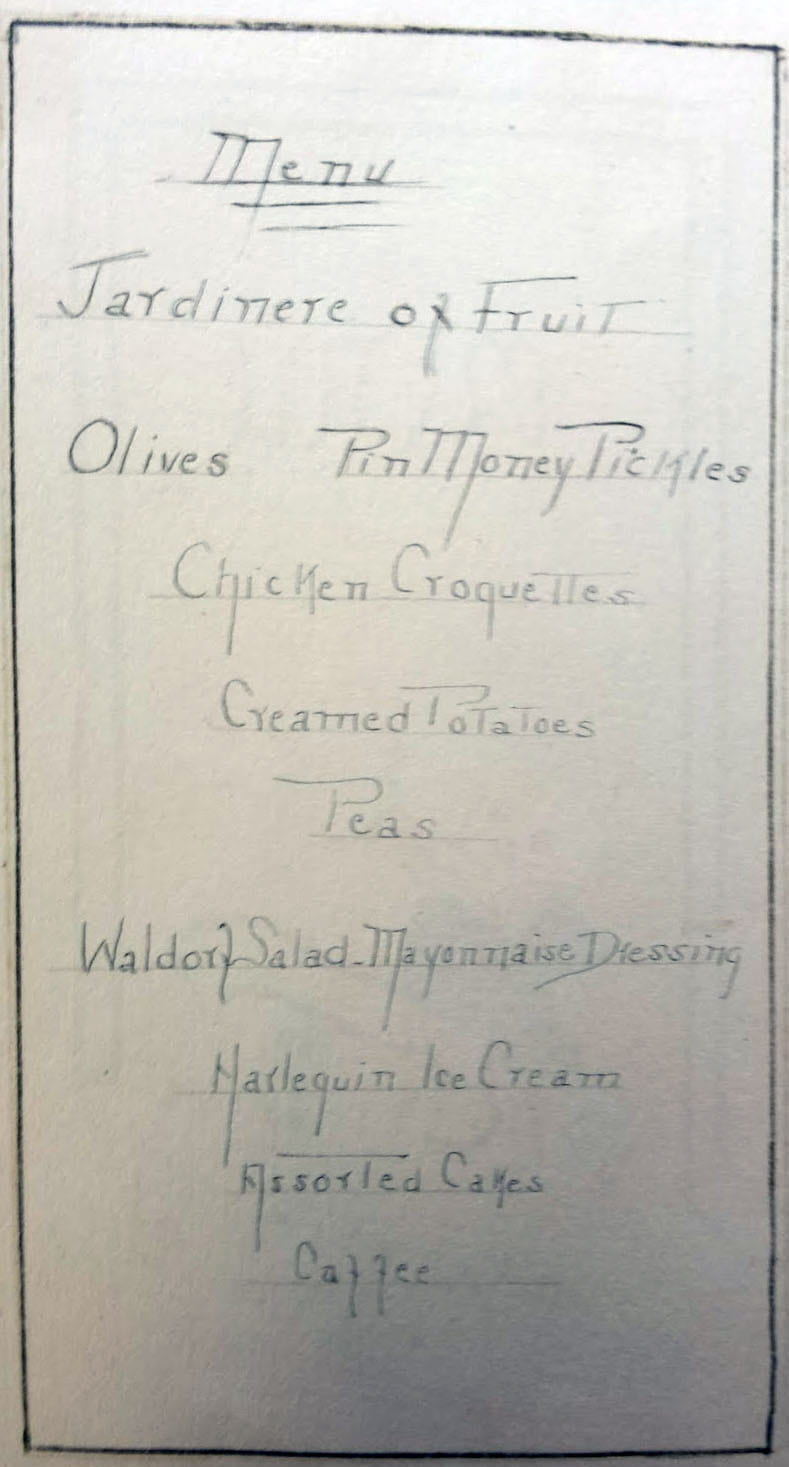
In this case the “Jardinere [sic] of Fruit” is a chic way of saying “mixed fruit”.
Pin Money Pickles is actually a brand name for pickles. “Pin money” is another way of saying allowance, usually given by a husband to his wife, although in the case of the pickles, it was what Mrs. Kidd earned from making her pickles.
I’m pretty sure the chicken croquettes, which are essentially chicken patties, were what was also served in 1915 and someone was trying to be clever with the spelling. Unless they really had multiple kinds of chicken pate, but I find that a little harder to believe.
I think creamed potatoes meant boiled potatoes with a white sauce as opposed to mashed potatoes. And cafe noir? That would be black coffee, friends. I guess the hostesses decided their guests had already had way more cream and sugar with everything else.
By 1926, the Senior Banquet program had become more formal and the menu less confusing.
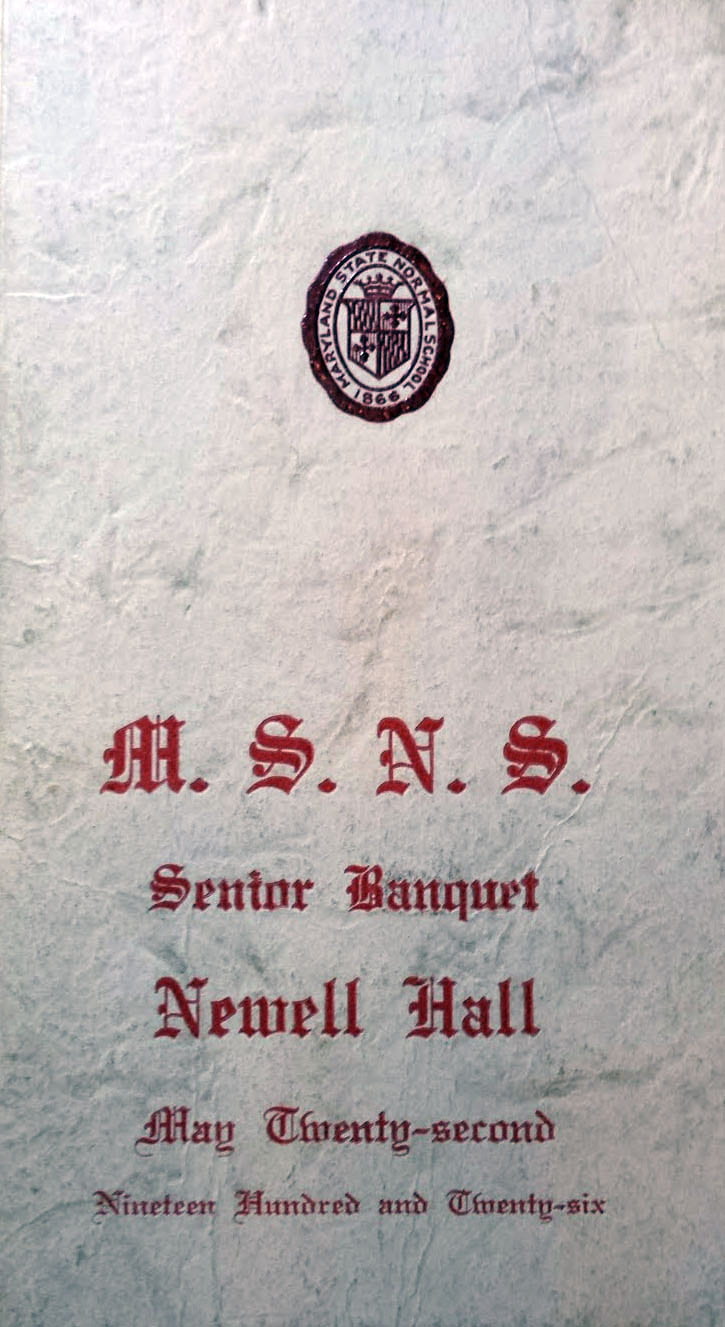
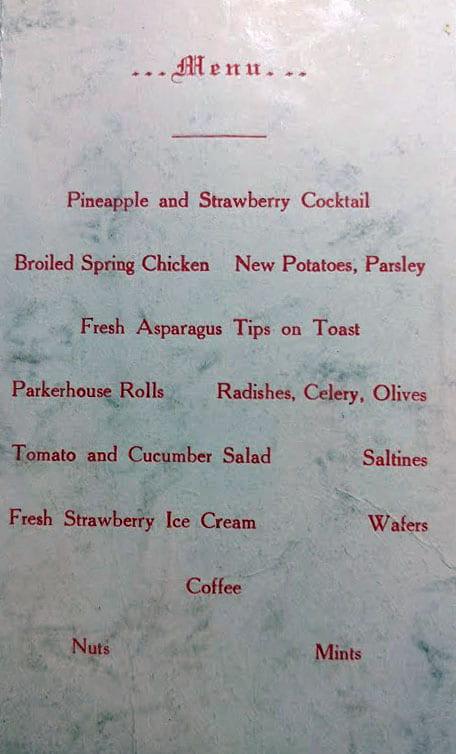
Parker house rolls are just a specific way of shaping the dough so that it makes an interesting shape – you flatten the dough in a circle and then fold it on itself so it has a seam after it’s baked.
In 1930, even with the Great Depression looming, the Senior Banquet menu was anything but spare.

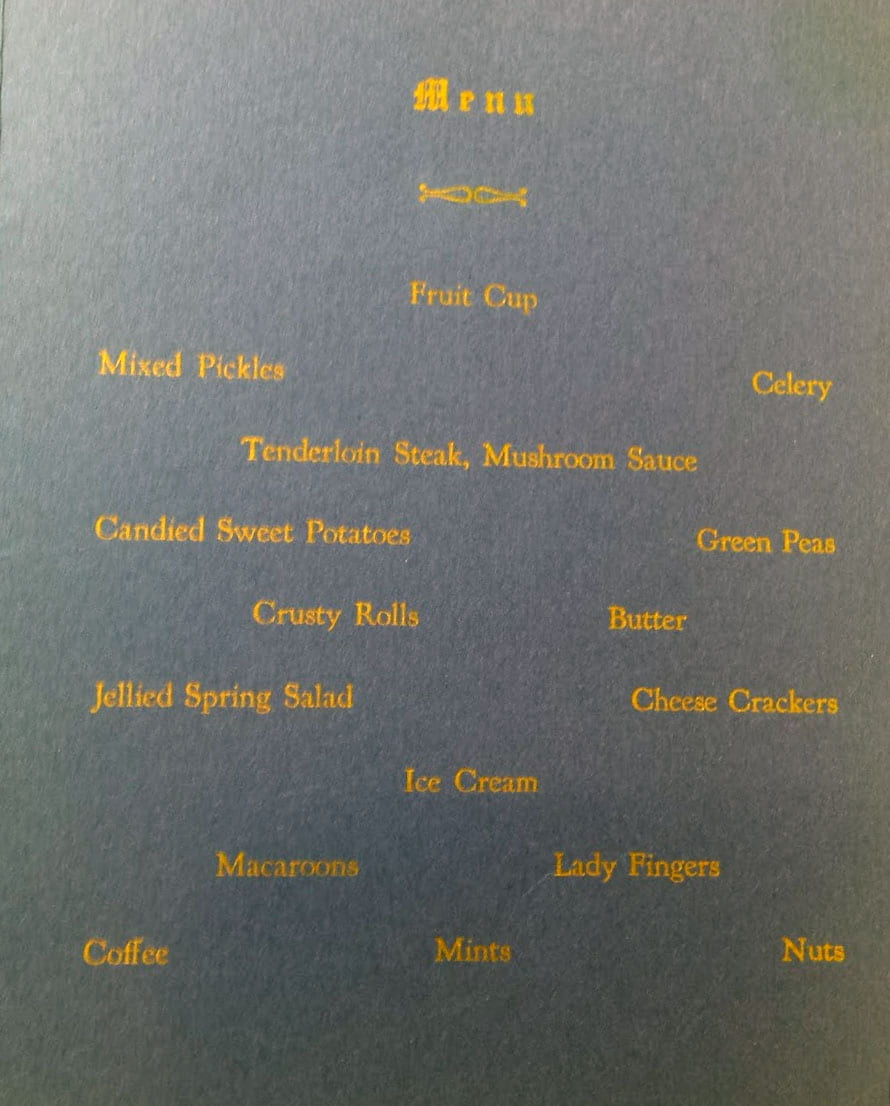
The only thing that might need some explanation is the “Jellied Spring Salad”. This is something that has fallen off our collective tables in recent years, but the history of gelatin and salads is long. As the Serious Eats post says:
Sales of sugar, and therefore Jell-O, were rationed during World War I, but in the interwar period (the 1920s and ’30s), the popularity of gelatin salads soared. The Depression spurred homemakers to stretch their ingredients as far as possible, and the introduction of lime-flavored Jell-O in the early 1930s gave the salad trend a major boost. Entire cookbooks were devoted to lime Jell-O, according to Belluscio, often instructing cooks to add a tablespoon of vinegar to cut the sweetness when using flavored gelatins in savory vegetable salads.
The effects of the Depression were certainly seen in the menu of 1932, as is seen by the return of chicken patties.

The rest of the menu is also simple. With the food shortages caused by the Great Depression, the US Government became more focused on encouraging Americans to eat not just with nutrition in mind, but with little waste. And the menus from 1930 through 1934 also make sure to mention butter as one of the offerings, perhaps because butter would have been a treat at the time — however, WWII butter shortages led to the rise in consumption of margarine.
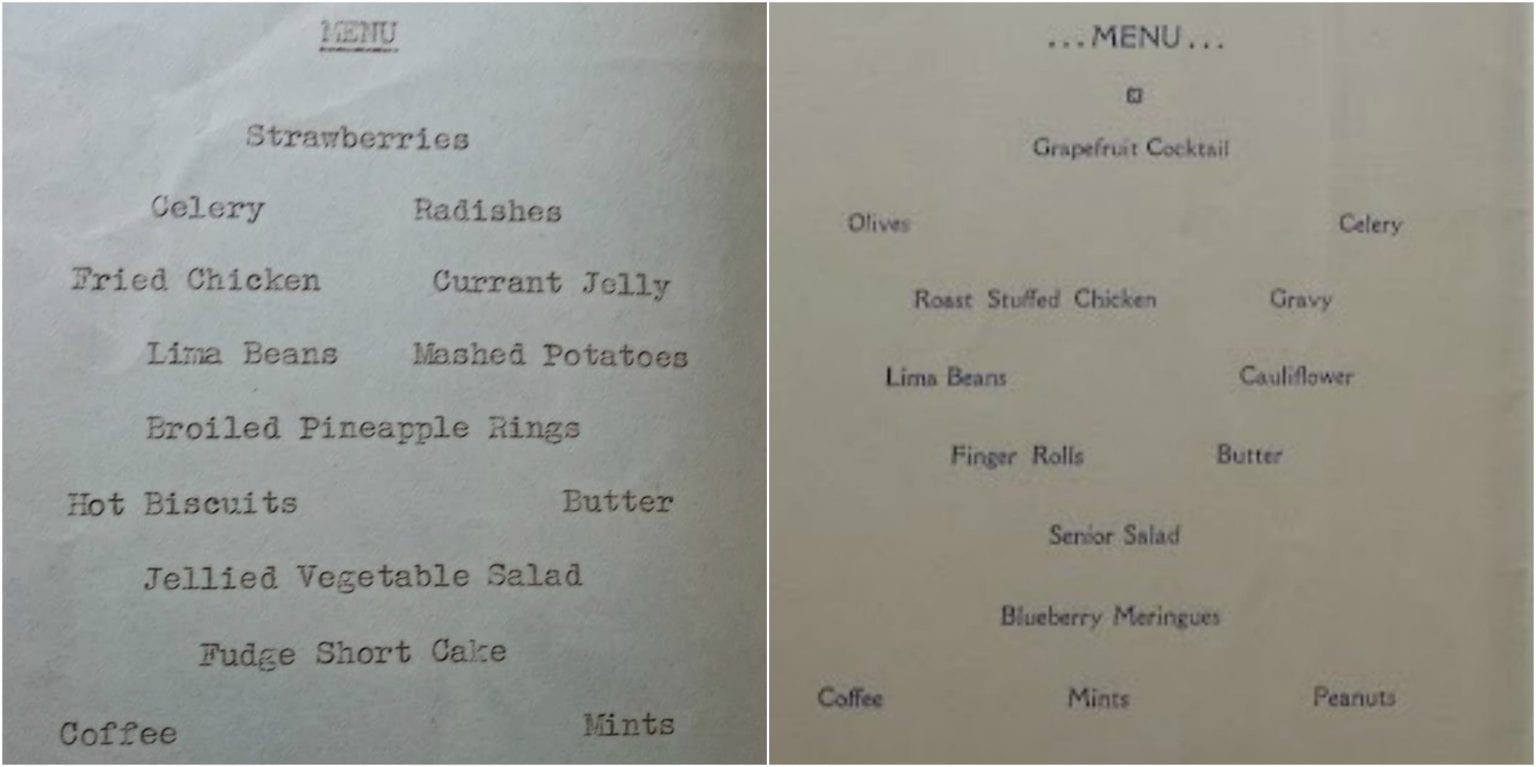
Don’t be fooled by the words “Senior Salad” — that really just means, you guessed it, salad made with Jell-O.
And I’ve never made a blueberry meringue, but perhaps it is something like the raspberry meringue from this 1903 cookbook :
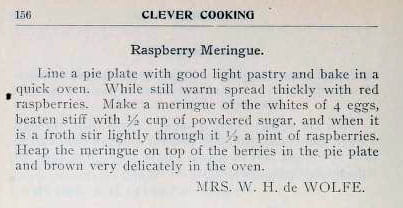
Margaret Laupus, Class of 1954, created a scrapbook to remember her time at the State Teachers College at Towson (TSC). Because of the mementos she kept, we have a good sense of what students were having at special occasions.
This invitation was part of a school dance just before Thanksgiving and includes traditional Thanksgiving dishes, including the Baltimore twist of sauerkraut.
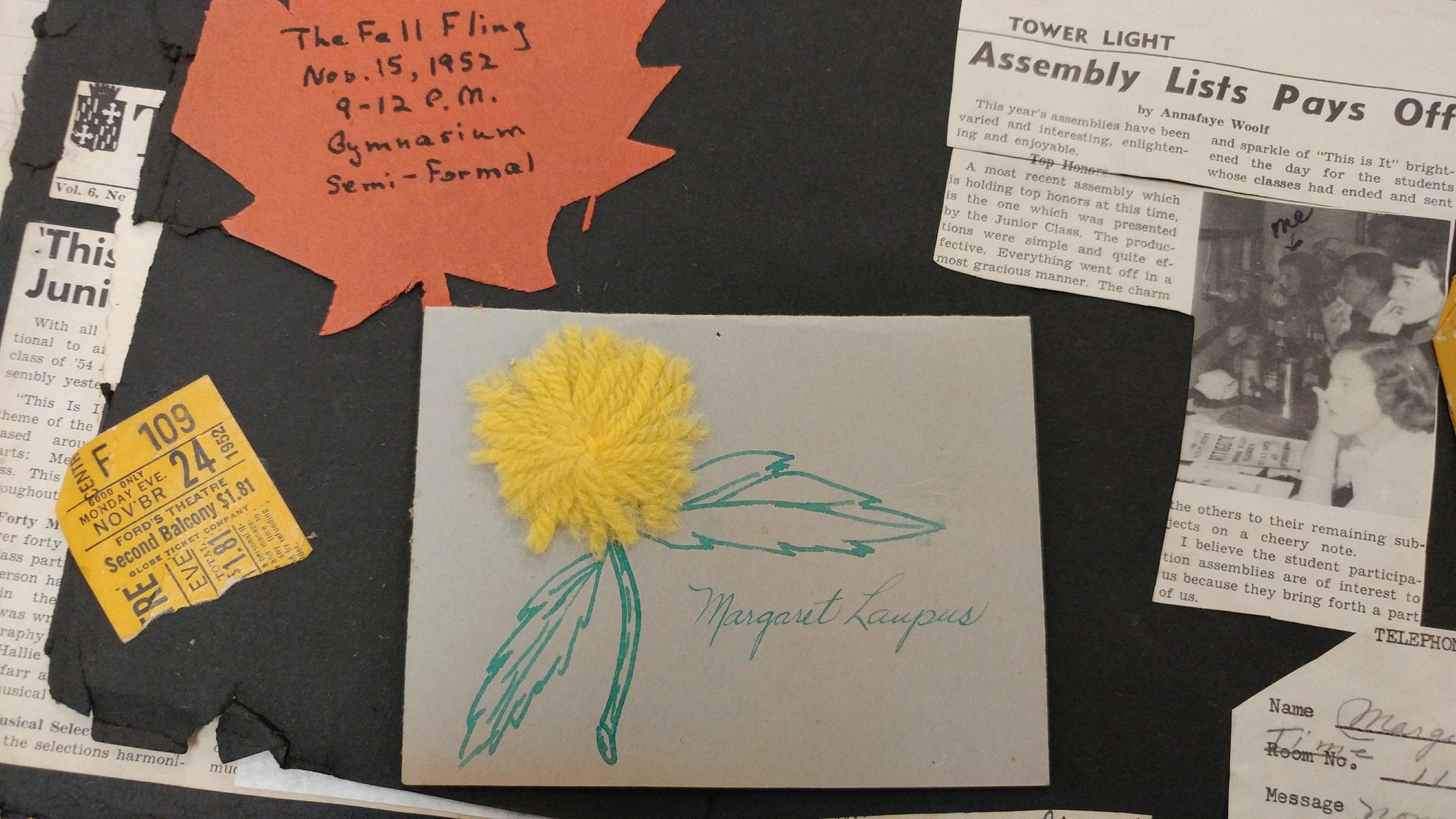
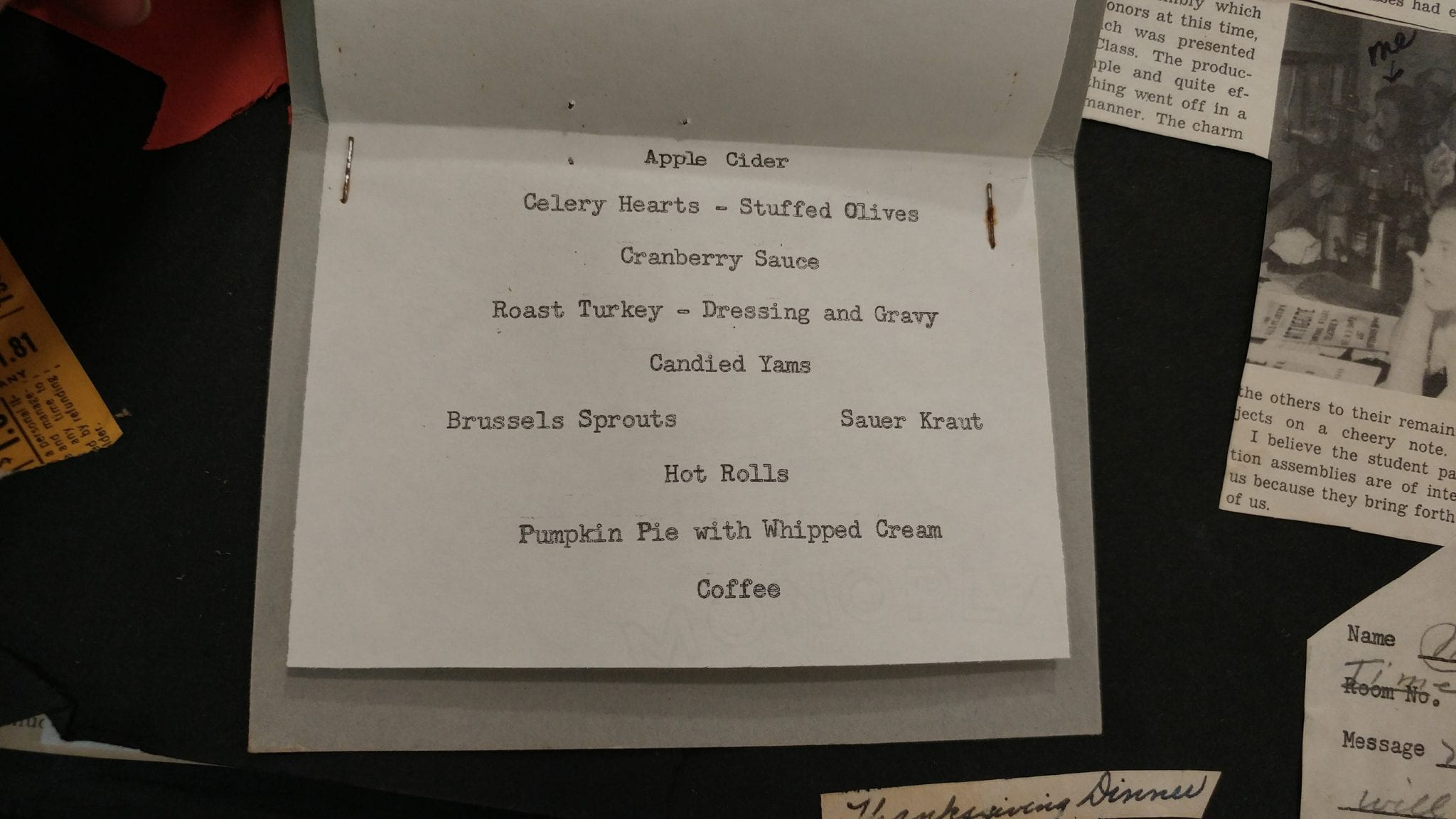
Here’s a Thanksgiving invitation and menu for the following year. I’m glad to see that they were still using handmade invitations sometimes. I also wonder what was in the Cider Cocktail. And if you’ve ever wondered why celery and olives seem to appear on so many tables, this article from 2014 offers some explanation.
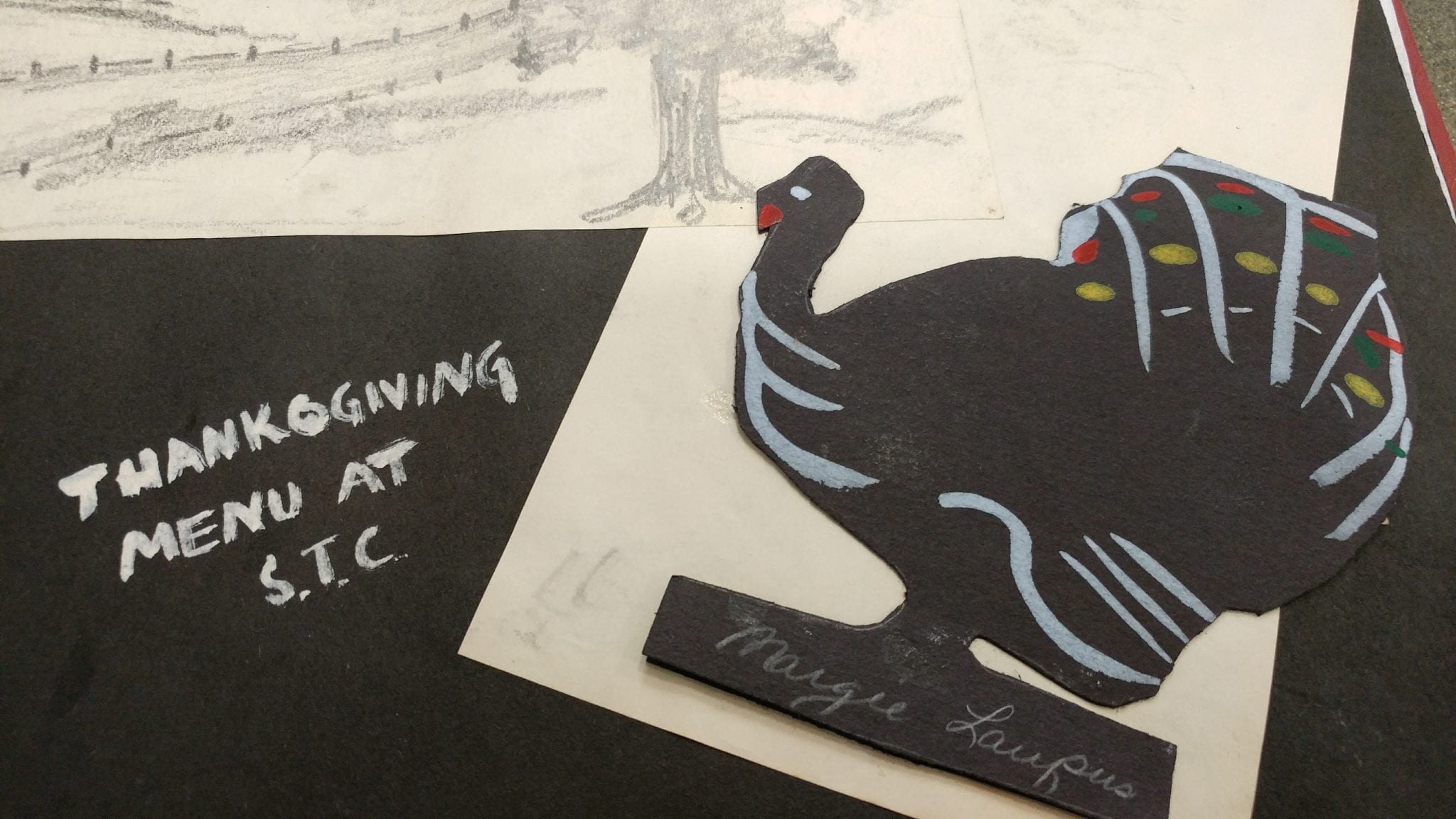
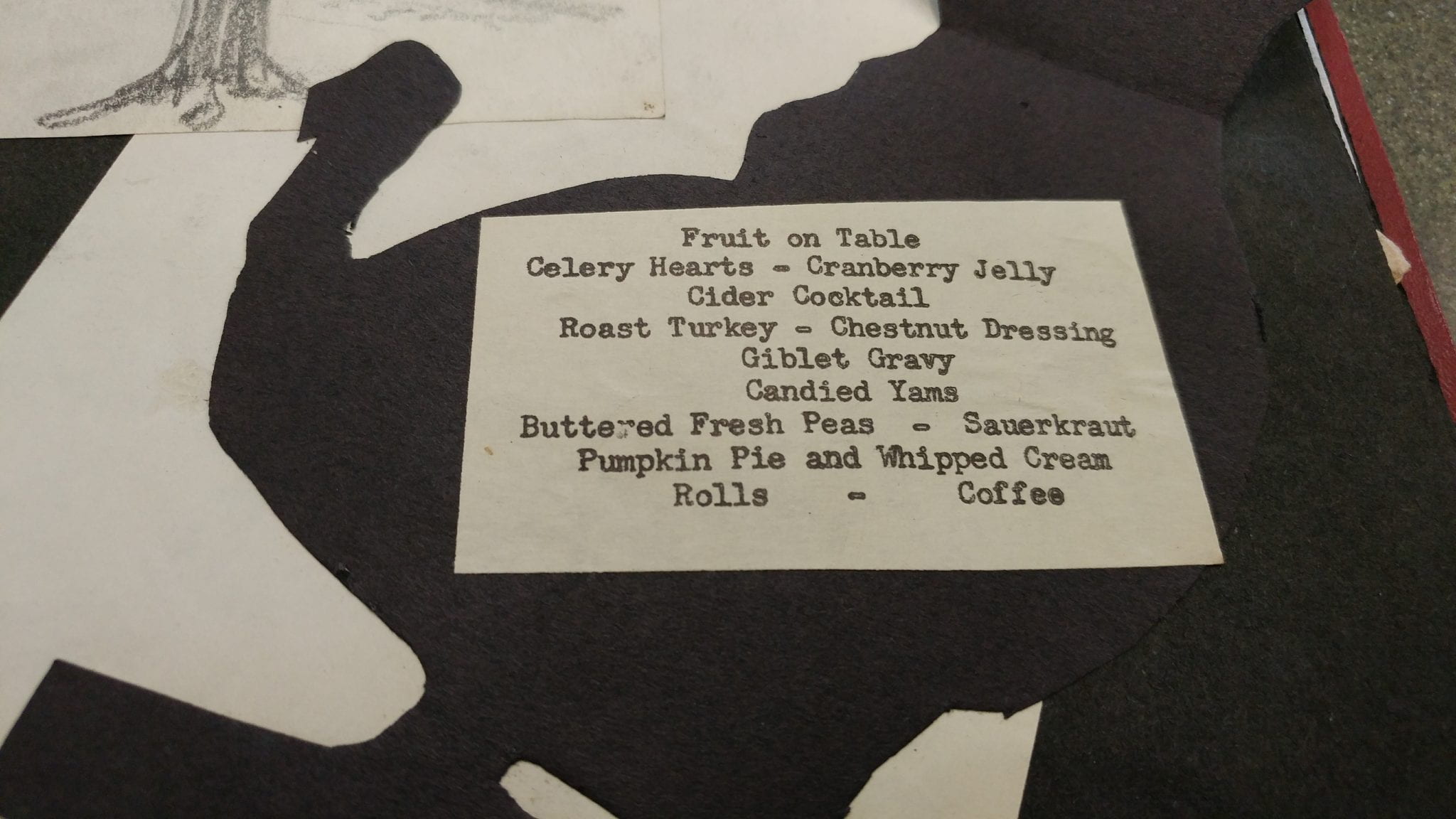
In 1969, Earle T. Hawkins announced his retirement after twenty-two years as Towson’s president. He’d led the school in its growth after WWII and for its first few years after its transition from a teachers college to a liberal arts college.
The dinner was held off campus at a banquet hall in Pikesville.
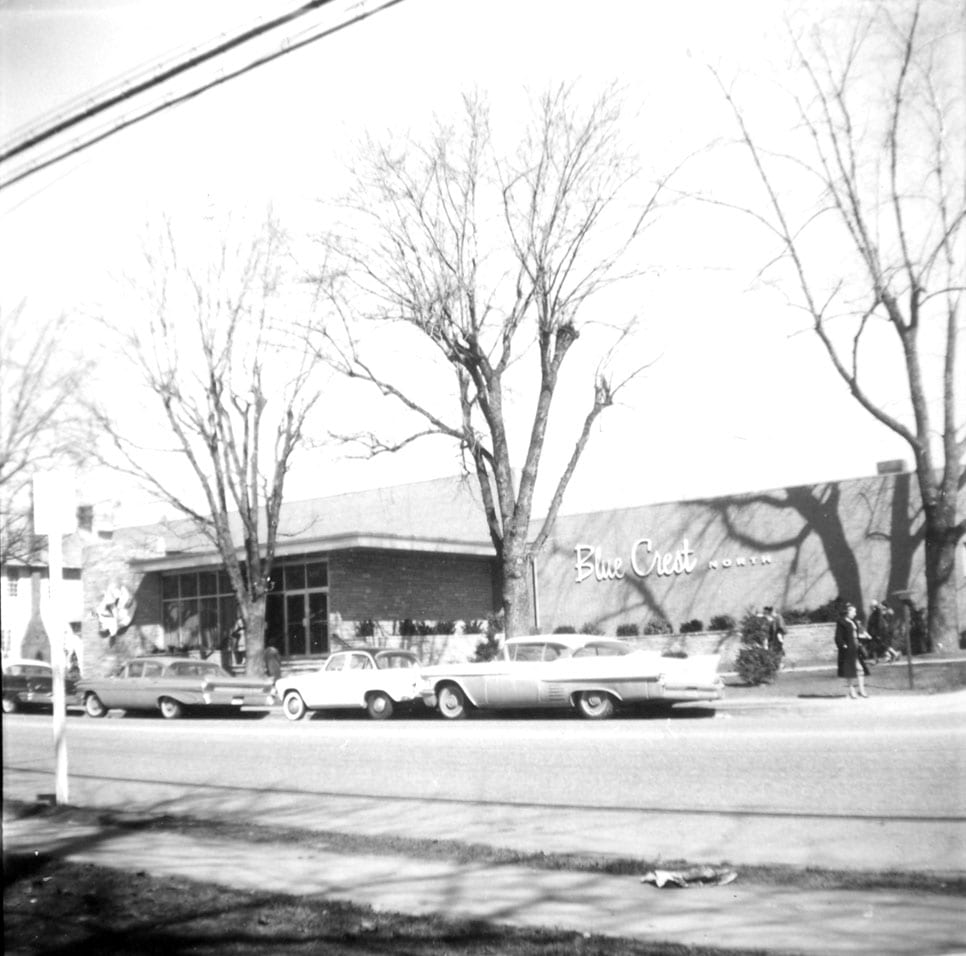

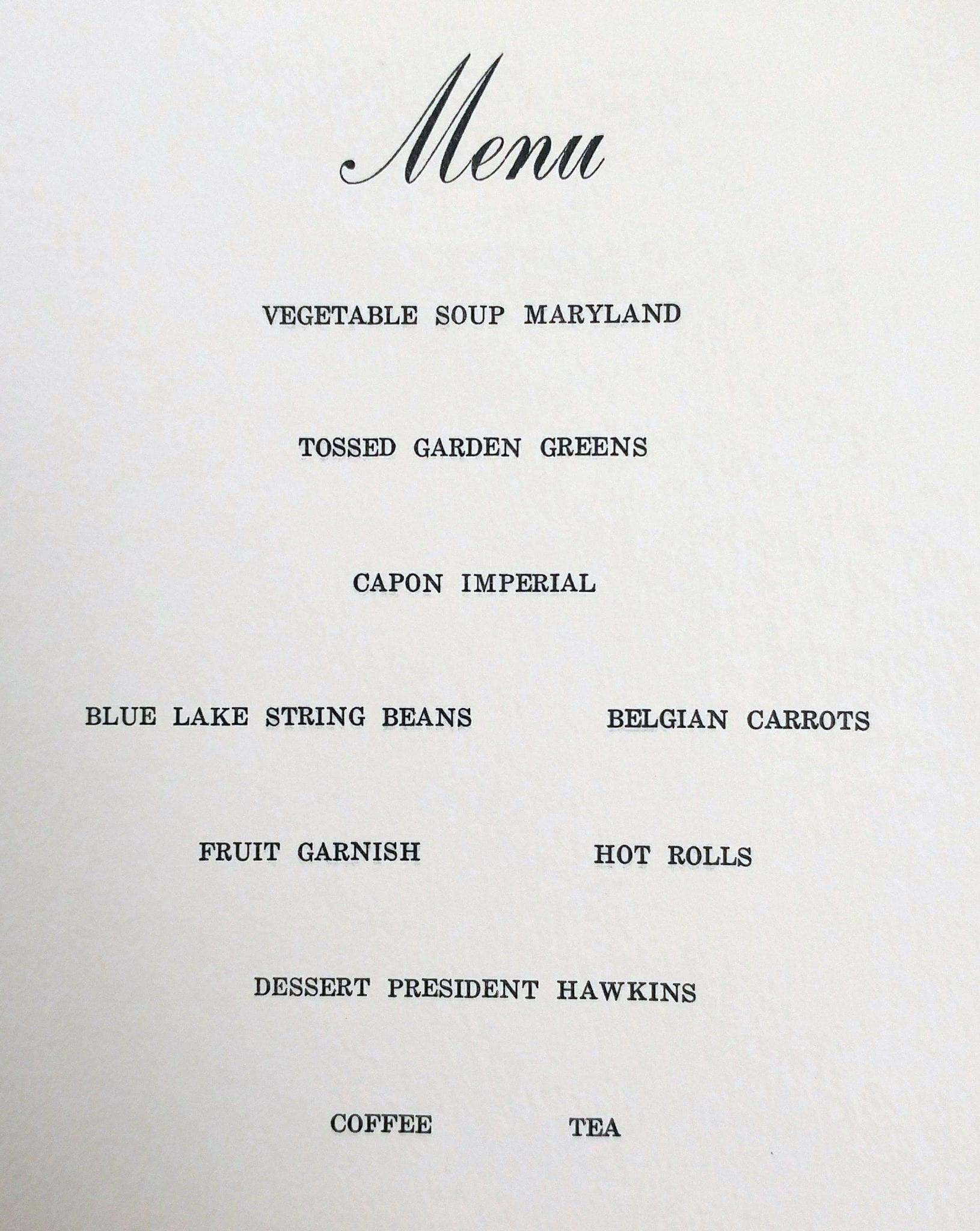
The menu is pretty basic. I don’t know what “Vegetable Soup Maryland” could be, unless they put crab in it. “Capon Imperial” is just breaded chicken baked in butter. “Blue Lake String Beans” is a variety of green beans, but “Belgian Carrots” is a recipe.
But the most mysterious thing of all is “Dessert President Hawkins”. I can find no record of what that dessert actually was!
In 1972, the campus catering service put out this brochure of its available menus.
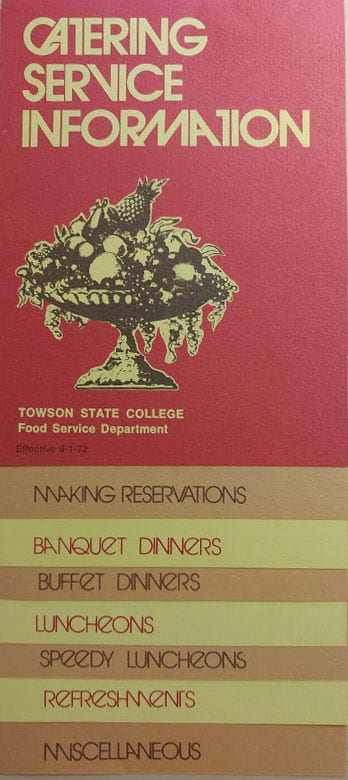

As you can see, even with the banquet dinners, there is a lot of variety, so long as you’re a carnivore who doesn’t have any other dietary restrictions. Of course, no mention of accommodations had been made in the past for dietary, religious, or medical reasons, so that’s something that must have become standard at a later date.
So if you decided to hold a seated dinner, you would have to make a choice for all the options listed in the menu for each of your diners. The cost of your entree determined the price, so if you were feeling fancy, you’d get the filet mignon or strip steak, or maybe even the crab cakes. But that half baked chicken for $3 is the 1972 equivalent of chicken patties. Everyone would also get whatever appetizer, salad and dressing, two sides, and dessert you chose as well. If you wanted cocktails that would cost more. And you’d have to pay for the paper goods everything was served on as well.
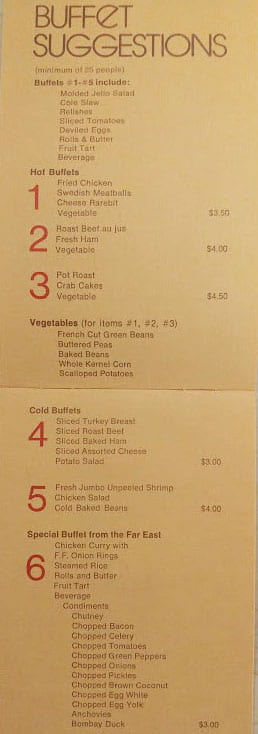
Buffet dinners probably offered some event planners easier choices — the ubiquitous relish tray and Jello salads were already on the menu! But again, if you were a vegetarian or vegan, the menus were driven by animal proteins, so you wouldn’t find a lot of options.
I don’t know what to think about option number 6. Curry and onion rings sounds . . . unusual.
Other than that, there aren’t a lot of unfamiliar dishes on either menu for today’s diners. Wedge salads have come back into vogue in recent years after being considered old fashioned for so long. Mayonnaise dressing is really just mayo thinned out with a little milk and seasoned with salt and pepper.
Catering on campus is now handled by Black and Gold, and unlike days of yore, the menus offer more variety as well as accommodations for specific diets. Dining halls also offer specialized meals as well as host dining events to celebrate the season.
But there is something charming about those hand-drawn menus from the very start of Towson’s history on this campus.
If you want to learn more about history and culture through menus, check out the fantastic site What’s On the Menu created by the New York Public Library or the vintage cookbook collection through the Internet Archive.